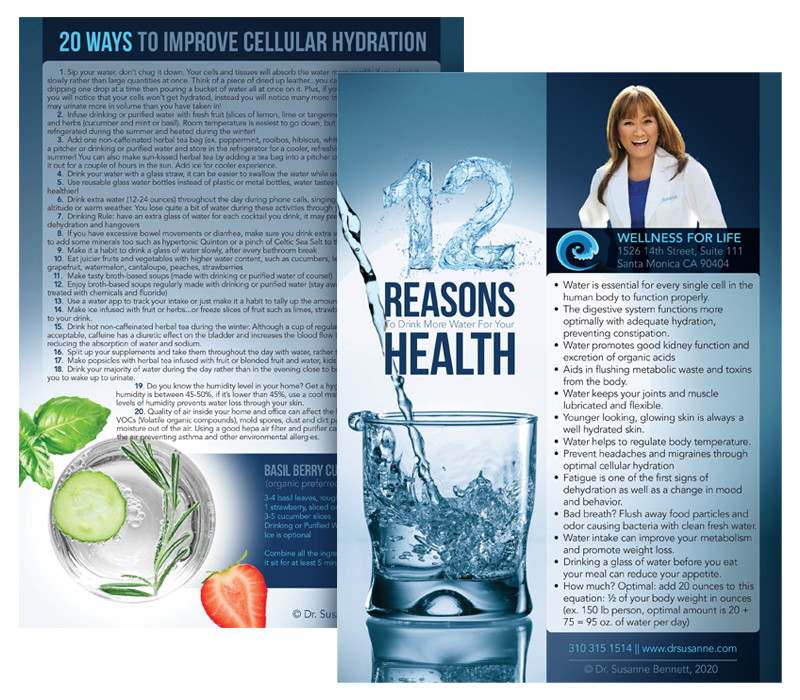If you ask people why they love drinking green juices and eating plenty of green salads and veggies daily, majority of them would answer that they are loaded with vitamins and minerals to keep them young and healthy. But how about CHLOROPHYLL, the primordial substance in all plants, algae and sea veggies that gives these superfoods the vibrant green color? Does it have any value to the human body besides making our urine and stool a bit green? I say absolutely YES!
Chlorophyll is the green pigment that plants and algae use to trap light from the sun. When the chlorophyll absorbs the sunlight, the plant goes through a biochemical process of photosynthesis, where it takes radiant energy from the sun and converts carbon dioxide from the air, and water through its roots, into chemical energy in the form of sugar (glucose) and oxygen.
Nature has an amazing way of working in dynamic patterns and cycles that reinforce and support each other. The byproduct of plant photosynthesis provides the essential oxygen and nutrition humans and animals need to survive on earth. And the carbon dioxide released by humans and animals breathing mechanisms is recycled and utilized by the plants. This is a true symbiotic relationship between the animal and plant kingdom.
What you might not be aware of is that your body benefits from the chlorophyll as well, helping with bad breath, increasing your energy level and even protecting you against cancer!
What are some of the health benefits of chlorophyll?
- Chlorophyll is a phytonutrient: Phytonutrients are substances within plants that help protect it from environmental toxins (germs, fungi and toxins in the environment), insects, harsh weather and other threats. Studies show that phytonutrients in plants can help prevent disease and other health issues in humans as well.
- Chlorophyll is an antioxidant and has protective effects relating to cancer:
In laboratory studies, chlorophyll has been found to bind with some cancer-causing substances, including environmental toxins – even heavy metals. This binding may block the amount of absorption of the substance during digestion, and help lower the risk of developing some cancers.
One study tested chlorophyll’s ability to eliminate an ingested carcinogen (aflatoxin), well known to cause liver cancer. In fact, taking chlorophyll eliminated 95% of the aflatoxin toxin within a 24-hour period.
- Chlorophyll stimulates the liver to detox: It up-regulates detoxifying enzymes. Add some chlorophyll rich foods to a green cleanse smoothie!
- Chlorophyll speeds up the healing process of wounds: It has been used to slow harmful bacteria reproduction, lower inflammation and promote healing and even control odors caused by bacteria in wounds.
- Speaking of odors, chlorophyll eliminates odors within the digestive tract and within the mouth and throat: Chewing a sprig of fresh parley or mint can help freshen your breath quickly. Chlorophyll has been tested in nursing homes and found there was an improvement in odor reduction as well as an improvement in constipation issues and gas. The magnesium in chlorophyll most likely increased the peristaltic action improving on their bowel movements and bloating.
- Chlorophyll may help suppress hunger! Eat more greens, and reduce your sugar cravings! Spirulina in particular has been researched for helping with controlling a stable blood sugar as well as cravings.
- Helps build red blood cells: Plant chlorophyll has a very similar molecular structure as human hemoglobin, with magnesium at the center of the molecule instead of iron and it appears to act in similar ways as hemoglobin, an oxygen carrier molecule!. More oxygen means more energy!
- Activates the Mitochondria to produce more energy- ATP! One more benefit of chlorophyll I have to share is a research paper I came across a few months back… the results of this study totally knocked me off my feet! Researchers found that when chlorophyll was ingested and at the same time exposed to sunlight (the red light spectrum) activated the mitochondria to increase production of CoQ10 levels and stimulated more production of ATP, energy! This is huge!
Until now, scientists believed that only plants, sea vegetables and algae had photosynthetic properties. This is the first study to confirm that mammals are photosynthetic too.
We now know that humans can use the sun to stimulate the mitochondria produce energy, in the presence of chlorophyll!
What was also interesting was that if the subject ingested the Chlorophyll alone, there was no difference in the CoQ10 levels. If they went out into the sun alone, it didn’t make a difference in the levels. For the CoQ10 levels to rise, and follow up with ATP- energy production, you had to have both present, chlorophyll and the exposure to sunlight (exactly red light).
So the next time you have a green drink or green salad, make sure to go outside exposing your arm and legs and bask in the sunlight! Your mighty mitos will be bursting of energy!
Here are some of the best sources of chlorophyll:
- Leafy Greens: the darker the veggie the more chlorophyll content! Some of the heavy hitters are kale, spinach, collards and Swiss chard. If you find it challenging to eat a lot of such veggies through the day try making a green smoothie or juicing your greens
- Herbs: So easy to add to everyday dishes! Try parsley, cilantro or dill. A lot of people I know use parsley as a “decorative touch” when preparing meals…but as I said earlier, it’s a great breath freshener!
- Sea Vegetables: Green seaweeds, as well as the red and brown contain chlorophyll. You’ll also get a lot of additional minerals. Be careful though, a little goes a long way, and seaweed is high in sodium and iodine.
- Algae: Not really a green plant, but is in reality a very nutrient dense bacteria (which contains a lot of chlorophyll, who knew!). Two types are popular, spirulina and chlorella. Rich in vitamins, minerals and high in protein, too.
- Other vegetables and sprouts: Arugula, leeks, green beans, dandelion leaves, beet tops, spinach, bok choy, cucumbers and zucchini. Green pepper and broccoli are also good sources.
- Cereal Grasses: Wheatgrass is a great one, as is barley grass. I use barley grass green powder instead of fresh grass juice, it’s just easier!
Before I finish, I want to talk about spirulina… I have wanted to take spirulina for the past 15 years, but have not found one that was not contaminated with mercury, arsenic or lead. Finally I found one that is made in Siberia in a bioreactor, where it has never been exposed to the external environment with the possibility of pollution, heavy metals and radioactive nuclear waste… very clean and pure, so I started taking it myself a couple of months ago and have found it to definitely improve my energy and brain clarity.
Click here if you want more information on the Siberian Spirulina!
Cooking and storage methods matter!
Storage: All of the foods containing chlorophyll are sensitive to light, so you do need to be careful when storing them. The chlorophyll will break down as it is exposed to light.
Raw or lightly cooked is better: Studies have also shown that chlorophyll content are reduced when green vegetables are cooked (especially when boiled), thawed after being frozen or when the produce have actually started to spoil. For example, the chlorophyll content in spinach decreases about 50% when it is boiled or even steamed.
Final words on chlorophyll!
My best advice to for everyone is to eat more dark green vegetables to get your daily dose of chlorophyll. If you’re like me, and want to up level your energy, oxygen carrying capacity and improve your CoQ10 productions, make yourself a green powder drink or pop a couple of Siberian Spirulina and go outside and get some sun! This is what I do every morning!





